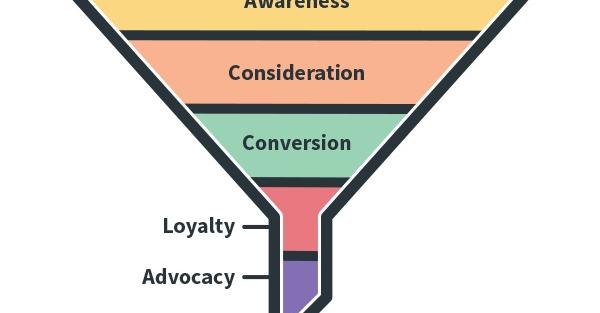Half the sales battle is creating awareness of the value offering. The other half is converting those who’ve been made aware of the existence of the value offering. Combine outreach efforts with successful conversion tactics and you’ll gradually move prospects through to the bottom of the sales funnel.
If you are new to the world of sales and marketing, you may not yet understand the progression of the sales funnel, including its unique stages. Here’s the inside scoop on the importance of sales funnels and why you should carefully map out the stages of your funnel.
Map Your Sales Funnel Stages
The most successful businesses prioritize sales. Products and services must be properly framed to educate target customers about their merit. Educate the audience, heighten awareness and they’ll be that much closer to conversion. The challenge lies in moving those prospects through to the bottom of the funnel.
Funnel mapping is best described as a visual portrayal of the sales funnel and overarching marketing process. Choose the right channels and you’ll succeed in capturing the attention of target customers while eliminating those who are uninterested in your value offering.
Funnel mapping for sales facilitates the analysis of the buyer journey throughout the entirety of the process starting with the initial point of contact and progressing toward the finish line of conversion. Funnel mapping also helps pinpoint flaws with your marketing and sales, empowering you to proactively eliminate those weaknesses.
Mind the Touchpoints
Businesses that are in regular contact with target customers keep their metaphorical finger on the pulse of the target audience. However, touchpoints at each stage of the sales funnel are distinct. Some business marketers and managers bypass touchpoints at the awareness stage, assuming there are few hurdles to overcome at this beginning point of the buyer’s journey.
Make a concerted effort to understand your customers throughout each stage of the buyer journey and you’ll have a better sense of how to guide them from the initial point of awareness to conversion. Be mindful of how your website, video ads, and other points of initial outreach are perceived by your target customers.
Consider the perspectives of all target demographics throughout the stages of a sales funnel. Do your homework and you might find feedback from men shows they tend to spend more time on the site than women. You might also uncover another informative gem such as women in the millennial age cohort tend to favor in-person visits at your business’s brick-and-mortar store. When used correctly, such insights are invaluable in the context of marketing and sales.
In order for your sales funnel to succeed, it must be understood by everyone in the organization how your prospects move through each stage. Encourage team members to provide feedback regarding prospect movement through the funnel, address problem spots without delay and you’ll find it is that much easier to facilitate timely customer transitions to the funnel bottom for increased sales.
In the end, your customer sales funnel map will provide the information necessary to comprehend and address the following:
- Why customers are leaving prior to conversion
- Why customers are converting
- Why customers are stagnating during the transition toward conversion
An understanding of the hurdles that prevent conversion makes it that much easier to remedy those problems for mutual benefit.
How to Create a Comprehensive Sales Funnel Map
Accurate sales funnel maps are characterized by a detailed structure. The top of the sales funnel is the awareness stage. This is the point in time where customers discover the value offering. Oftentimes, content is used to draw in new leads, paving a path toward continued engagement and eventual conversion for sales. As long as your marketing content makes an impact on the audience or solves one of their problems, you’ll succeed in capturing their attention.
The midpoint of the funnel is the stage in which research occurs. The middle funnel is an opportunity for targets to compare potential solutions. Arm your prospects with the information they need to understand value offerings’ features and merit, let them perform analysis and they’ll make an educated buying decision. You can help target customers in their quest for value by providing promotional material, demos, and other relevant information.
The bottom of the funnel is the point at which prospects are nudged toward conversion. This is the part of the sales funnel where your sales team really shines. Train your sales reps to artfully transmit a truly indelible message to target customers and they’ll be that much more likely to convert.
Recognize that most target customers of those exposed to your marketing material will not convert even though they become aware of your value proposition. Consider retargeting as a strategy to reconnect with those who visited your website or another part of your online footprint and you’ll gradually steer that many more interested parties toward conversion.

